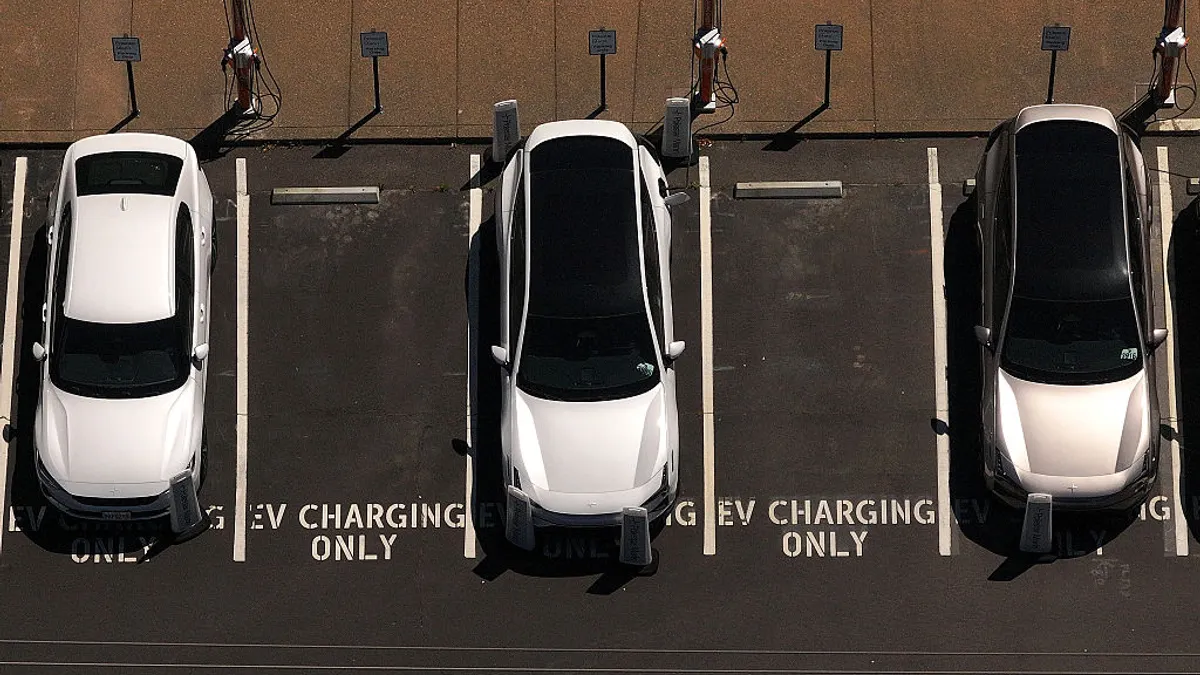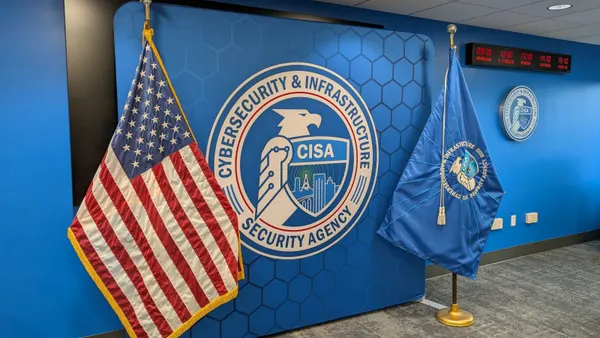Dive Brief:
- Managed charging programs can turn flexible electric vehicle loads into a grid resource capable of generating $30 billion in annual utility savings, according to research from ev.energy, a managed charging provider in the United States, with supporting research from The Brattle Group.
- Each actively managed vehicle can create up to $575 in avoided costs for utilities, leading to a 10% reduction in all customer electric bills by 2035 — whether they own an EV or not, according to the report. Programs that include a vehicle-to-grid bidirectional charging component could more than double the benefits.
- While bidirectional programs are still grappling with technical and policy challenges, managed charging is ready for full deployment, ev.energy CEO Nick Woolley said in an interview. “From a regulatory perspective, we don't need to do more pilots. We need to scale these programs,” he said.
Dive Insight:
Demand from growing EV adoption is beginning to show up on the electric grid, creating simultaneous opportunities and hurdles for utilities, Woolley said.
Absent a proactive approach to managing the demand, power companies will face premature transformer failures, require emergency system upgrades and see customer bills rise higher, according to the report. With managed charging, they can create a more decentralized, optimized and affordable grid.
“The biggest source of demand growth is going to be electric vehicles on the energy system in the 2030s, and that really means, from a utility perspective, that if they don't control and manage that resource, they could end up building lots of expensive additional generation to meet the demand,” Woolley said.
Last year, an NREL report looking out to 2050 noted that “EVs are expected to be the largest source of electricity demand growth, and will require investments in generation, transmission, and distribution systems.” It also said that smart integration of EVs “can strengthen the grid by providing flexibility that reduces electricity costs and increases resiliency.”
The report published Thursday is aimed at grid planners, program managers and regulators, and aims to create a “playbook” for harnessing EV demand.
The analysis relied on a 2024 projection by the Edison Electric Institute that predicted almost 79 million electric vehicles on U.S. roads by 2035, but “the business case holds true even with slower EV uptake,” according to the report.
“The fundamental per-vehicle value is so significant that the business case for managed charging remains urgent even under more conservative adoption scenarios, such as those highlighted in recent industry reports,” it says.
EVs reached over 10% U.S. market share in 2024, and in the first half of this year more than 600,000 have been sold. Sales dipped 1.4% in June, relative to May, but the decline reversed in July, according to Cox Automotive, a services and technology provider for the sector.
EVs will soon be foundational parts of virtual power plants, according to the report, helping to unlock energy capacity, reduce costs and stabilize the grid.
“Past analyses have shown that Virtual Power Plants can deliver reliable power at costs up to 60% lower than traditional generators. This new research goes further — offering a rigorous, quantitative framework that confirms EV flexibility as a critical, cost-effective tool for preserving both grid reliability and affordability,” Brattle Principal Ryan Hledik said in a statement.
Each actively managed EV can save utilities $145 to $575 annually for every customer enrolled, ev.energy’s analysis found. Adding bidirectional charging “more than doubles these benefits, providing an annual avoided cost exceeding $1,300 per vehicle,” the company said.
While managed charging solutions are ready to operate at scale, the same isn’t true yet for bidirectional charging, Woolley said.
“The key barriers really are around the technology, from a car manufacturer perspective. And then there is also a utility barrier ... we need to get utilities comfortable with the interconnection requirements,” he said. That means “demonstrating with a utility partner in real life that the customer experience can be good, the value can be realized, and technically, this thing can work and it's not going to break the grid.”
Correction: We have updated this story to clarify that The Brattle Group provided supporting research for ev.energy's analysis.














